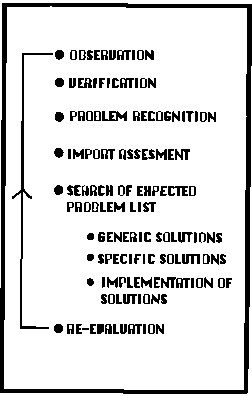The recovery process after a simple or critical incident begins with an observation.. Vigilance is essential so that new data are not missed. The new observations must be verified, since there are artifacts and transients which may obscure true findings. Verified data then must be recognized as representing an actual, or potential problem. Failure to do so may result from lack of understanding of what could be problematic, or from complacency generated by the usual “safe” routine. As some problems are more critical than others, an assessment of the importance of a problem is necessary. This assessment will influence how quickly the problem is addressed, and how much additional verification may be needed. It will also determine whether generic failure compensation solutions are immediately required. Most practitioners know what to expect in various situations, and generally have a “list” of expected problems. Initial ideas for responding to actual or potential threats are usually drawn from this list.

Occasionally another problem mimics one on the list, which can lead to faulty decisions.
Solutions are classified as GENERIC -that is they are broad in scope and without specific etiologic foundation, or SPECIFIC -based on specific etiologic hypotheses or knowledge. Generic solutions generally attempt to provide “failure compensation” and to buy time until specific diagnoses and solutions can be definitively implemented. Errors can occur in implementing either generic or specific solutions, and these errors will generate new problems to be solved. The final, and most important step in the process is the re-evaluation of the original problem, its current status, and any additional outstanding problems requiring solutions. Assuming that a problem has been solved without double-checking can lead to catastrophe, and solving one problem may not eliminate the threat to the patient.

